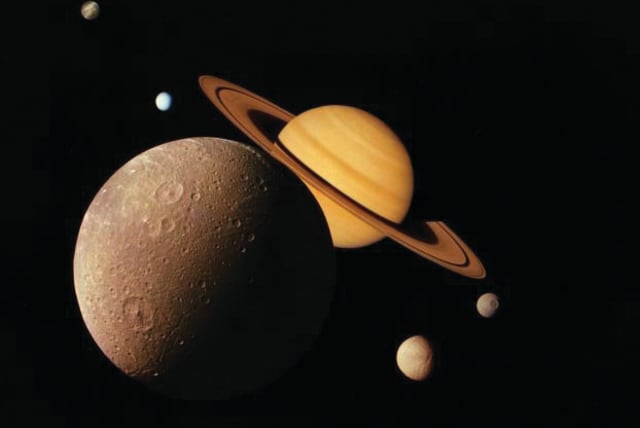Saturn visible in Israel's night sky at its brightest

While the rings won't be visible to the naked eye any small backyard telescope should show the rings, which will appear as bright oval-shaped disks.
Saturn will be visible in the night sky and at its brightest on the night of August 26 and 27, in Jerusalem from 8:07 p.m. and 5:20 a.m.
Saturn will reach opposition, which is when it lies opposite to the sun in the sky, on the night of August 26.
The opposition only marks the middle of the period when Saturn is most visible and makes it the best time for mature star-gazers to catch a glimpse of the ringed planet.
It can be found in the middle of the Aquarius constellation and will be visible for much of the night and will reach its highest point in the night sky just after midnight.
Specifically, the highest point will be at 00:43 a.m. where it will be visible at 46° above the southern horizon.
Soon after reaching its opposition Saturn will reach its perigee, meaning it will be at its closest approach to Earth.
When Saturn reaches its perigee it will be at its brightest and largest, this will make it an excellent time to observe Saturn's rings.
The Rings of Saturn
While the rings won't be visible to the naked eye any small backyard telescope should show the rings, which will appear as bright oval-shaped disks.
The rings will be at their brightest a few hours around the opposition, this is called the Seeliger Effect. The Seeliger Effect occurs due to the composition of Saturn's rings, the rings are composed mostly of fine ice particles.
Normally the brightening is dampened due to some particles blocking others from being fully illuminated, however, during the time of opposition, the particles will be illuminated from the same angle leaving very few in shadow, making the rings noticeably brighter.
After the opposition Saturn will slowly begin to disappear from view as it slowly moves further away from Earth. The planet will remain visible for the rest of 2023 and only begin disappearing totally from the night sky around mid-February 2024.
Jerusalem Post Store
`; document.getElementById("linkPremium").innerHTML = cont; var divWithLink = document.getElementById("premium-link"); if (divWithLink !== null && divWithLink !== 'undefined') { divWithLink.style.border = "solid 1px #cb0f3e"; divWithLink.style.textAlign = "center"; divWithLink.style.marginBottom = "15px"; divWithLink.style.marginTop = "15px"; divWithLink.style.width = "100%"; divWithLink.style.backgroundColor = "#122952"; divWithLink.style.color = "#ffffff"; divWithLink.style.lineHeight = "1.5"; } } (function (v, i) { });

